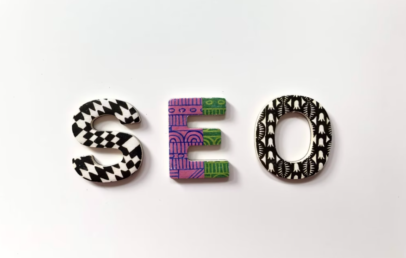The biggest nightmare for a webmaster is to discover a sudden dip in their SEO ranks, wiping out all of their hard work! Do you happen to be one of them? So, take a big breath and relax! You’re not the only one who feels this way.
Every website has experienced or will experience a dip in ranks at some point in the future. You won’t be able to escape it, but you may certainly lessen the effects. A decline in ranks can be caused by a number of factors. This page explains both the apparent and the less obvious ones.
Forgetting Noindex Tags
When you use the noindex element on a website, it tells search engines that, while they can still crawl the page, they can’t index it. The noindex directive prevents a page from being indexed by a search engine, which means it will not appear in search engine results pages. When a nofollow tag is added to a web page, it prevents search engines from crawling any of the links on the page.
This means that any ranking authority possessed by the page will not be passed on to the pages to which it links. When you only want a search engine to index a page in results pages but not follow the links on that page, use the nofollow tag.
Using Thin Content
Website content that gives very little value to users is referred to as thin content. The following are some examples of thin content pages:
- Copy that isn’t deep or useful- If you merely scratch the surface of an important subject, especially if it has the potential to affect a reader’s health or finances, search engines may interpret your material as thin.
- Duplicate or repetitive material-Those pages are likely to be very similar if your blog has dozens of posts that all target the same keyword. While they aren’t exact replicas, search engines are intelligent enough to recognize that they are essentially the same.
- Content that has been scraped or syndicated
- Pages with few categories, tags, or authors
- Affiliate pages or doorway pages
Not Covering Every Article Aspect
The quantity of detail, the breadth or narrowness of the topic chosen, the time spent crafting the article, and the dedication to precision are all elements that influence the length and depth of an article. If you do not cover all the aspects of the article, then the readers might not understand the context. Hence they will not stay glued till the end as well.
Overstuffing Anchor Text
The use of too many over-optimized anchor texts on your website will have a detrimental impact on your results. You’ll be flagged by Google’s filters if you’re attempting to spam the system. This increases the likelihood of your site receiving fines and losing valuable page ranks.
You can fix them if you’ve received a penalty signal from Google or if your backlink profile appears spammy.
Go through your site and dilute any anchor texts that are keyword-rich. You can do this by increasing the number of text links you have. Rather than attempting to include text links on every page, just include them if they are actually relevant to the page’s content.
We can observe how Google is boosting pages with original and valuable content to higher results after the Panda update. When you include a lot of anchor texts in your helpful material, Google may assume you’re doing something spammy.
Using High-Resolution Non Compressed Images
When you visit a website via a link, the server requests all of the files necessary for the site to load on your screen. Images may account for the majority of the data that needs to be loaded, depending on how your site is built.
Optimizing pictures for the web is one of the first things we do when we work with a client to enhance site speed because it may be such a large part of what’s loading (and what’s slowing the site down).
The faster a website loads, the smaller the image file sizes are.
However, you don’t want your website to look grainy or fuzzy, especially in this day and age of high-resolution screens, so make sure it’s optimized. It’s crucial to know what kind of image to utilize.
Annoying pop-up Ads
It’s no surprise that online pop-ups irritate people. They’ll appear at inopportune times. They’ll include an offer that isn’t relevant. Their design will be so perplexing that closing the browser will be preferable to dealing with it.
The problem is that all of them are easily correctable errors. Also, People will become irritated if you don’t provide a simple means for them to escape your popup, and there’s a strong possibility they’ll leave your website and never return. Your popup is there to encourage people to take action, not to force them to.
If your offer isn’t good, no amount of design or copy will persuade consumers to stay and convert. Your offer must be relevant, interesting, and worth at least as much as their important lead data.
Error Message And Page Break
If a visitor makes a typo in the URL or clicks a link to a page that no longer exists, they will receive the 404 page. To see how often this happens to your audience, look at your website’s error log or Google Search Console.
It’s aggravating when you can’t locate what you’re looking for. If your 404 page only has an apology and a ‘back’ button, or a simple link to your homepage, you’re missing out on a huge opportunity to turn a bad experience into a good one. This page should serve as a tempting link back to important portions of your website, rather than a dead-end.
Redirect Loop
When a redirect loop occurs, the browser displays an error message. Visitors will never see the destination page as a result of this problem. The same is true for search engines: once they understand they’re locked in a redirect loop, they’ll cease pursuing the redirects and wind up on the destination page.
A redirect loop transmits ranking signals (such as link authority and relevance) from one URL to another, and this process never ends because the ultimate URL never resolves. As a result, such ranking signals have been lost.
Orphan Pages
Orphan pages result in a bad user experience and crawl results. There is no authority passed, and search engines have no means of evaluating the page’s relevance without an identity or a sense of how it integrates into the rest of your site.
Orphan pages are a major SEO issue because they waste crawl time, drive low traffic, and have a low to non-existent PageRank. When low-quality pages consume up a substantial portion of your crawl budget, you’ll have to spend more resources just to get Google to the pages that matter. Furthermore, if Google’s crawl rate does not find natural links between your website’s pages, it will slow down.
However, even if your content is fantastic, it will not be a ranking factor.
Broken Link
If you have a website, I’m sure you’ve worked long and hard hours to make it a useful resource for your visitors. However, if your links are broken, it can jeopardize all of your hard work. Your website’s broken links can be harmful in two ways:
They create a negative user experience — Users become disappointed when they click on links and receive 404 errors, and they may never return. They devalue your SEO efforts – Broken links prevent link equity from flowing freely throughout your site, which has a negative influence on rankings.



